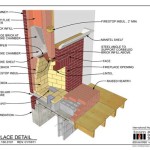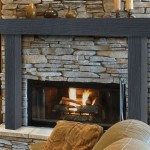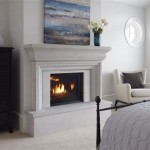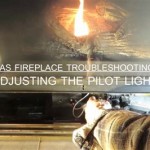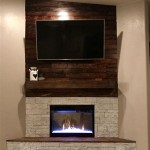Freestanding Ventless Gas Fireplaces: A Comprehensive Overview
Freestanding ventless gas fireplaces offer a convenient and aesthetically pleasing heating solution for a variety of residential and commercial spaces. Unlike traditional wood-burning fireplaces or vented gas fireplaces, these units do not require a chimney or venting system, making them easier and less expensive to install. This design feature allows for greater flexibility in placement and can be particularly advantageous in homes where adding a chimney is impractical or impossible. This article will explore the key characteristics, benefits, safety considerations, installation procedures, and maintenance requirements associated with freestanding ventless gas fireplaces.
The primary functionality of a freestanding ventless gas fireplace revolves around converting natural gas or propane into heat through combustion. The fireplace unit typically consists of a burner, a gas valve, an oxygen depletion sensor (ODS), and a decorative surround. The gas valve regulates the flow of fuel to the burner, while the ODS monitors the oxygen levels in the surrounding room. If the oxygen level drops below a safe threshold, the ODS automatically shuts off the gas supply, preventing the accumulation of carbon monoxide. The decorative surround encases the internal components, providing a realistic flame appearance and radiating heat into the room. These fireplaces are available in a wide range of styles, from traditional to contemporary, to complement various interior design aesthetics.
Key Point 1: Advantages of Ventless Technology
The core advantage of freestanding ventless gas fireplaces lies in their elimination of the need for venting. This simplifies the installation process significantly. Traditional fireplaces require extensive chimney construction, which can involve structural modifications to the building and substantial labor costs. Ventless models bypass these requirements, allowing for installation in virtually any room of a house, apartment, or office, provided gas and electrical connections are accessible. This ease of installation not only saves money but also reduces the disruption to the living space during the setup process.
Further enhancing their appeal is the higher heat efficiency of ventless fireplaces. Traditional vented fireplaces exhaust a significant portion of the heat generated up the chimney. Ventless models, on the other hand, release nearly all of the heat produced into the room, resulting in greater energy efficiency. This can translate into lower heating bills, especially in zones where supplementary heating is frequently required. The increased efficiency makes them an environmentally conscious choice for heating smaller spaces.
The design flexibility afforded by ventless technology also contributes to its popularity. Because there are no venting constraints, freestanding ventless gas fireplaces can be placed against walls, in corners, or even in the center of a room, serving as a focal point. They are also readily available in a variety of sizes and styles, allowing consumers to select a model that perfectly matches their space and decorative preferences. From traditional log sets to modern glass beads, the aesthetic options are extensive, providing ample opportunity to personalize the ambiance of a room.
In addition to placement versatility, freestanding ventless gas fireplaces often have portability advantages compared to their vented counterparts. While they are not designed to be moved frequently, shifting them within a room or even relocating them to a different room (assuming proper gas and electrical connections are available) is generally simpler than relocating a vented fireplace. This flexibility can be especially useful for renters or those who anticipate moving in the future.
Key Point 2: Safety Considerations and Operation
While ventless gas fireplaces offer numerous benefits, safety is paramount. Carbon monoxide (CO) production is a primary concern associated with any gas-burning appliance. Although equipped with an Oxygen Depletion Sensor (ODS) to mitigate risk, proper ventilation is still crucial. While these fireplaces are designed to operate without venting, they are not intended for use in completely airtight spaces. Building codes often mandate minimum room sizes and ventilation requirements for the safe operation of ventless gas fireplaces.
Adequate ventilation ensures that oxygen levels remain sufficient for complete combustion and prevents the buildup of carbon monoxide. Manufacturers typically specify the minimum room size and ventilation openings necessary for safe operation. These guidelines should be strictly adhered to. Regularly checking the ODS functionality is also essential. If the pilot light frequently extinguishes, or if there are any other signs of abnormal operation, the fireplace should be inspected and serviced by a qualified technician.
Beyond carbon monoxide, another key safety consideration is the surface temperature of the fireplace. While the flames are contained behind a glass screen, the glass and surrounding surfaces can become hot during operation. It is imperative to keep flammable materials, such as curtains, furniture, and paper, a safe distance from the fireplace. Children and pets should also be supervised to prevent accidental burns. Many models include safety barriers or screens to further reduce the risk of contact with hot surfaces.
Proper installation plays a vital role in ensuring safe operation. The fireplace should be installed by a qualified technician who is familiar with local building codes and gas regulations. The gas line and connections must be leak-tested to prevent gas leaks, which can pose a fire hazard. The technician should also verify that the fireplace is properly grounded and that the electrical connections are secure. It is also important to have a carbon monoxide detector installed in the room where the fireplace is located. The detector should be tested regularly to ensure that it is functioning correctly.
Key Point 3: Installation and Maintenance Procedures
The installation of a freestanding ventless gas fireplace generally involves connecting the unit to a gas supply line and an electrical outlet. As previously mentioned, a qualified technician should perform this task to ensure safety and compliance with local codes. The technician will typically run a gas line from an existing gas supply point to the fireplace location. The connection should be made using approved fittings and materials, and a leak test should be performed to ensure that there are no gas leaks.
Electrical connections are necessary to power the ignition system and any optional features, such as blowers or remote controls. The technician will connect the fireplace to a nearby electrical outlet, ensuring that the circuit is properly grounded and adequately rated for the appliance's power consumption. In some cases, a dedicated electrical circuit may be required. The technician will verify that all electrical connections are secure and that there are no exposed wires.
Regular maintenance is essential for the continued safe and efficient operation of a ventless gas fireplace. This typically involves cleaning the burner assembly, inspecting the gas lines and connections, and checking the ODS functionality. The burner assembly should be cleaned periodically to remove any dust, debris, or soot that may have accumulated. This can be done using a soft brush or vacuum cleaner. The gas lines and connections should be inspected for any signs of leaks, corrosion, or damage. If any problems are detected, they should be addressed immediately by a qualified technician.
The ODS should be checked regularly to ensure that it is functioning correctly. This can be done by observing the pilot light. If the pilot light frequently extinguishes, or if there are any other signs of abnormal operation, the ODS may need to be replaced. In addition to these routine maintenance tasks, it is also important to clean the glass screen of the fireplace periodically. This will help to maintain a clear view of the flames and prevent the buildup of soot or other deposits. Use a glass cleaner specifically designed for fireplace screens, following the manufacturer's instructions.
Proper inspection and upkeep contribute to the longevity and safety of freestanding ventless gas fireplaces. Adhering to manufacturer guidelines and regular professional servicing will ensure optimal performance and safe operation for years to come. Ignoring routine maintenance can lead to decreased efficiency, increased risk of malfunctions, and potentially hazardous situations.
Choosing a freestanding ventless gas fireplace can offer a practical and aesthetically pleasing heating solution for many. Careful consideration of safety precautions, proper installation by qualified professionals, and consistent maintenance are crucial for enjoying the benefits of these appliances safely and efficiently.

50 Free Standing Ventless Gas Fireplace Visualhunt

Empire Vent Free Stove Bedroom Approved Fine S Gas

Radiance Vent Free Gas Stove The Place

50 Free Standing Ventless Gas Fireplace Visualhunt

Free Standing Ventless Gas Fireplaces Colaboratory

Ventless Gas Fireplace Vent Free Modern

50 Free Standing Ventless Gas Fireplace Visualhunt

Vent Free Fireplaces Stoves At Com

Procom Vent Free Indoor Stove 25 000 Btu Standing Dual Fuel Propane And Natural Gas 170173 The Home Depot

How To Install A Free Standing Gas Fireplace Modern Stove Corner Decor
Related Posts

